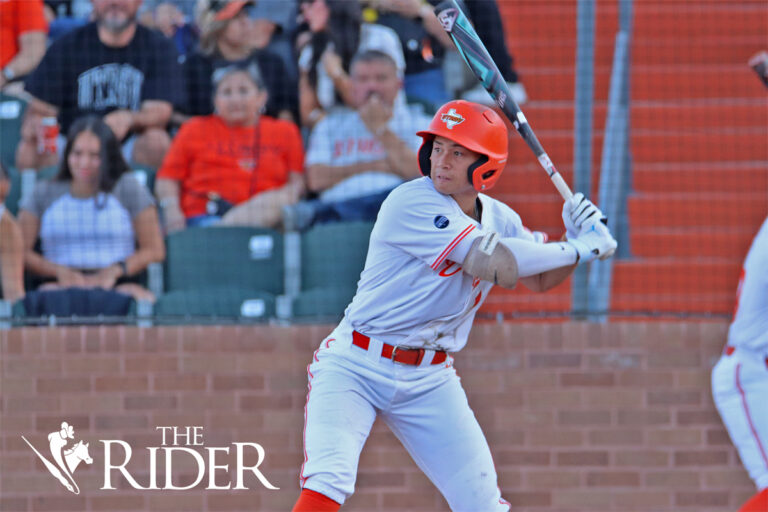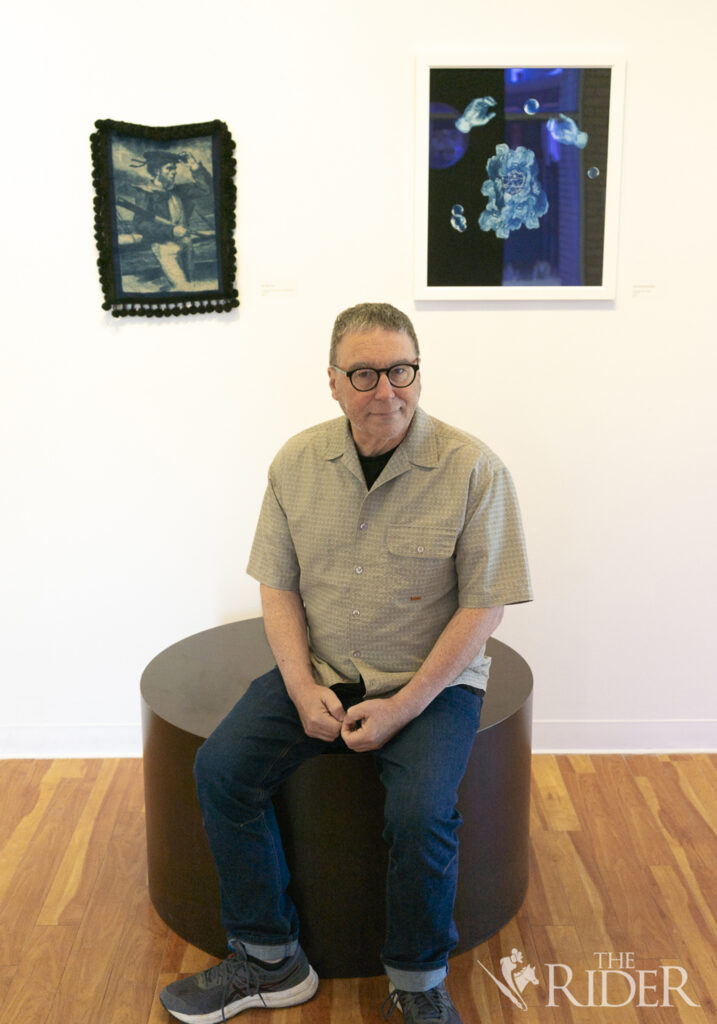
Eduardo Escamilla/THE RIDER
Brenton Hamilton, a UTRGV photography lecturer, cultivates a distinct aesthetic that challenges conventional notions of the medium by exploring the edges of what photography is and can be.
His solo exhibition “The Unfamiliar,” on view through Friday at the Rusteberg Art Gallery in Brownsville, showcases a fusion of 19th century photographic processes and contemporary artistic expression, offering viewers a unique and enigmatic experience. The exhibit opened March 24.
Hamilton’s work is deeply rooted in historical techniques, particularly cyanotypes, a 19th century printing process that produces striking blue images.
However, he does not merely replicate the past. According to the artist, he pushes the boundaries of these traditions, incorporating diverse materials and challenging the very definition of photography.
“I’m interested in [historic processes] because they … assist me in being the storyteller that I want to be … in these fantasies that I’m interested in pursuing,” Hamilton said.
The exhibition unfolds a series of personal and surreal narratives, centered around a recurring blue figure that is a surrogate for Hamilton’s self-exploration.
“It’s an autobiography, an unusual one,” he said. “Perhaps it’s not direct. It doesn’t look like me, but I have assigned that character to my personality, to my experiences, to my background, to things that I’m interested in.”
Motifs such as floating figures, night skies and celestial references thread through the exhibition, creating an atmosphere that is both dreamlike and introspective.
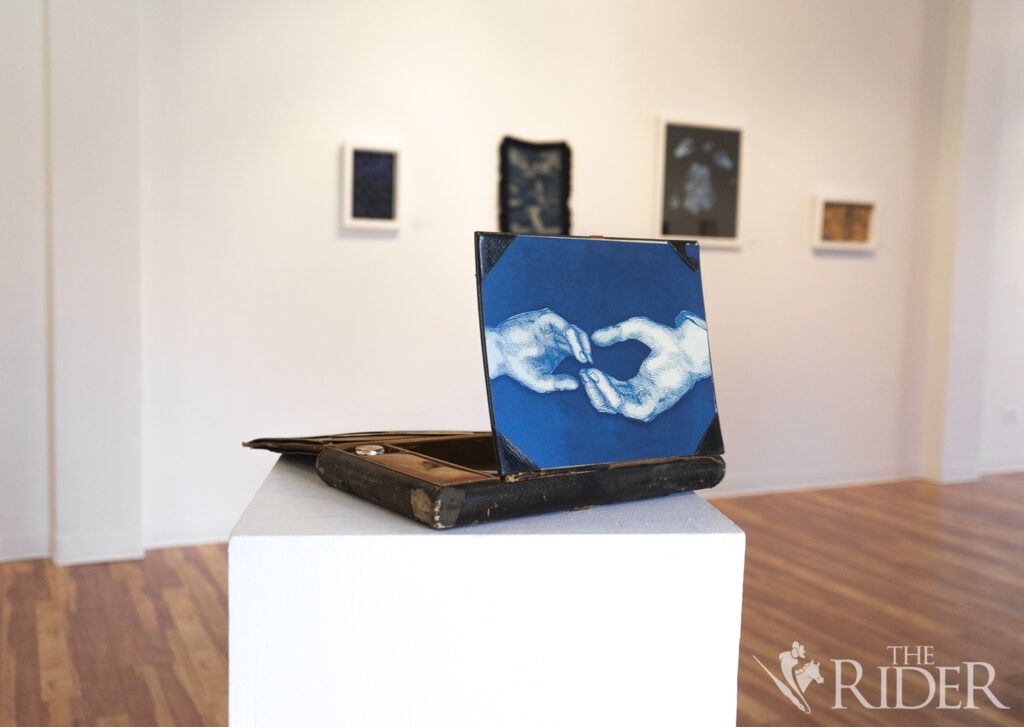
Eduardo Escamilla/THE RIDER
Hamilton’s mastery of cyanotypes enhances this effect.
“Using the cyanotype assists me in making something from another place, that isn’t associated with the real world that we live in,” he said.
Hamilton embraces the historical dismissal of cyanotypes as merely aesthetic, drawn to their ability to create images that transcend reality.
“In the 19th century, the cyanotype was dismissed,” he said. “Even 19th century art critics would have nothing to do with it because it was so dramatically distant from what real life felt like … and that appeals to me.”
Hamilton’s artistic influences are wide-ranging, encompassing surrealism and art history. He deconstructs and reinterprets elements that resonate with him, incorporating them into his work.
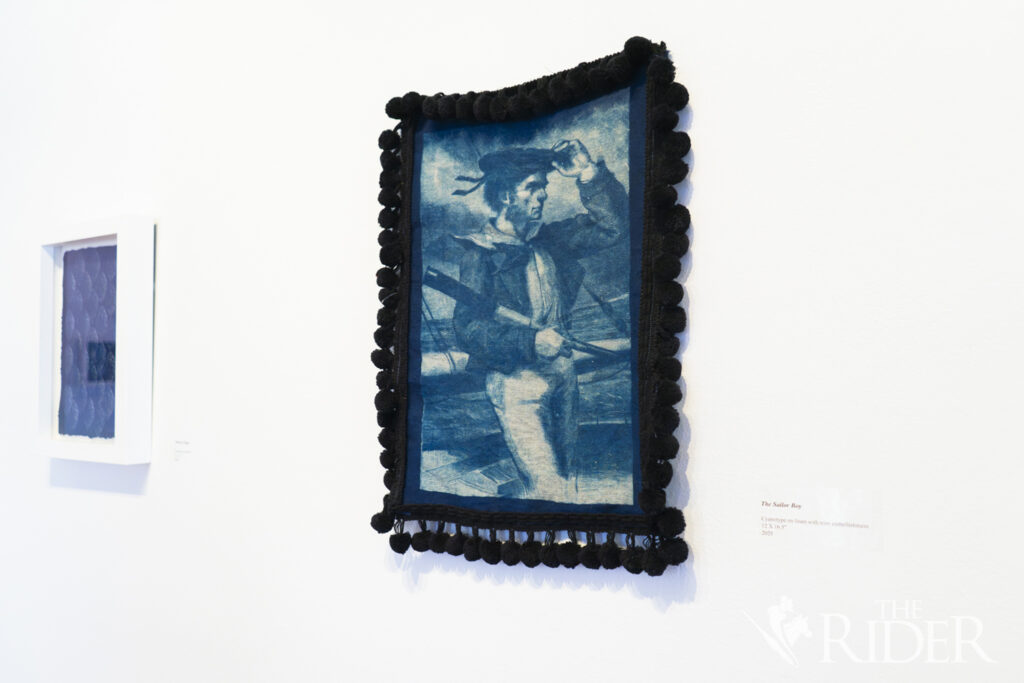
Eduardo Escamilla/THE RIDER
“My research has been intense. My practice has been intense. The teaching has been intense,” he said. “I’ve been devoted to this for a long time. I’m very involved … with it as an artist.”
In his new work, Hamilton incorporates fabric, embellishments, sewing and collage, further blurring the lines between photography and other art forms.
The resulting pieces often prompt the question, “Is that a photograph?” A question he welcomes.
“I’d like to make objects with photography that defy classification,” he said. “I don’t mean, I don’t want the viewer to not know what they are, but I sure am interested in pursuing the edges of what photography is.”
Hamilton’s fascination with materials like Belgian linen stems from their “history of labor” and “utilitarian-ness.”
He integrates these elements into his vision, adding layers of meaning to his work.
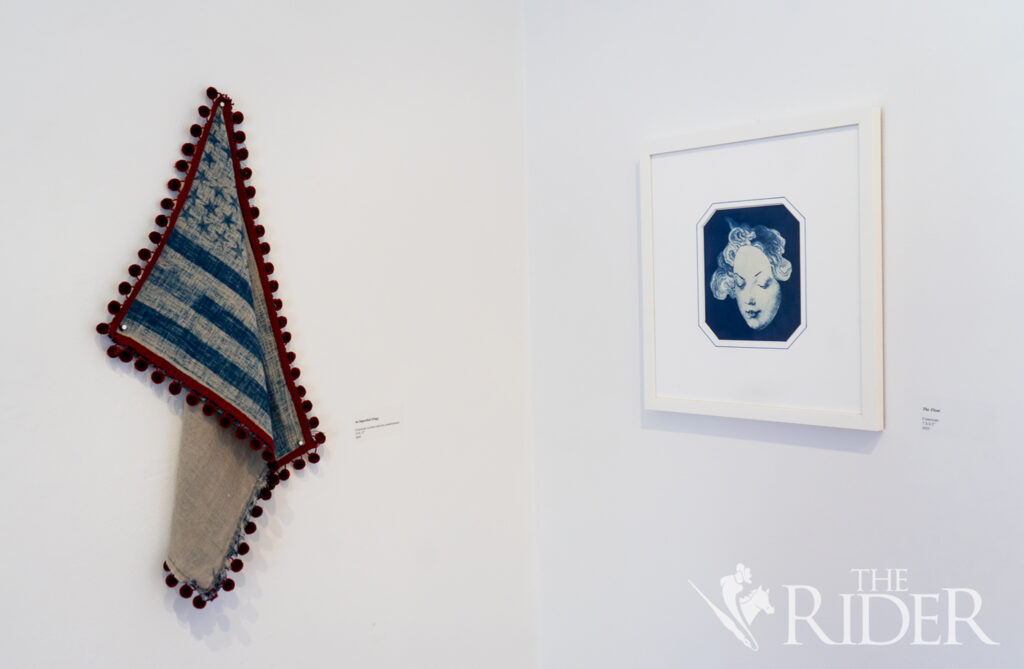
Eduardo Escamilla/THE RIDER
Regarding the recurring motif of soap bubbles in his work, Hamilton said he deconstructs images that appeal to him, finding these bubbles “exquisite.”
“There’s a reference to existential freedom, which is something I think about,” he said. “It’s something I teach to my classes, that I say to my students that I want them to pursue. I think it’s very abstract, but a really powerful thing that can be part of a creative pursuit.”
A closing reception will take place from 6 to 8 p.m. Thursday at the Rusteberg Art Gallery in Brownsville. For more information, visit showpass.com.





